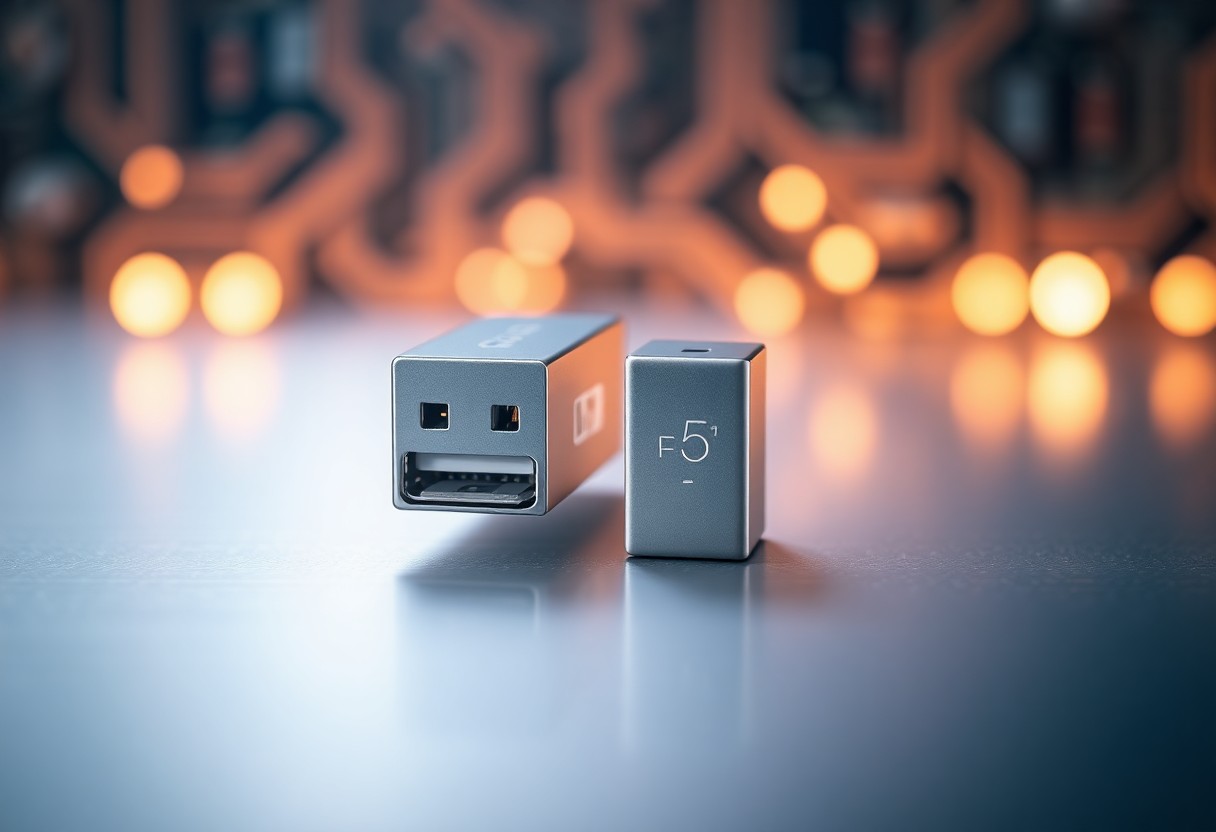It’s crucial to understand the differences between USB 0 and Thunderbolt 5, especially if you’re looking to maximize your device’s performance. These two technologies may serve similar purposes in connecting peripherals, but they offer distinct advantages and capabilities. In this post, you’ll learn how each standard impacts data transfer speeds, power delivery, and compatibility with your devices, enabling you to make informed choices for your tech needs.
Understanding USB 0
While USB 0 is often overlooked in favor of its more advanced counterparts, it laid the groundwork for modern data transmission standards. Initially introduced as a theoretical concept, USB 0 aimed to simplify the process of connecting peripherals to computers, offering a straightforward solution to the complexities of legacy connections. This protocol set the stage for the rapid evolution of USB technology that followed.
History and Development
Before USB became the standard for computer interfaces, various connection types dominated the market, creating a fragmented ecosystem. The USB 0 concept emerged in the early 1990s, focusing on interoperability and ease of use. Over time, this evolved into USB 1.0, which addressed limitations and established a baseline for future developments in the USB family.
Key Features and Specifications
Along with simplifying connectivity, USB 0 introduced several key features that significantly improved user experience:
- Plug-and-play functionality
- Ability to connect multiple devices through a single port
- Standardized cable and connector format
- Support for both data transfer and power supply
Any understanding of USB 0 helps you appreciate how far technology has come in enhancing connectivity standards.
Plus, USB 0’s design principles emphasize user-centered functionality, ensuring that devices could be easily connected and powered without complex setups. This led to a surge in peripherals using the standard, solidifying USB’s place in electronics:
- Enhanced data transfer speeds
- Reduced cable clutter by consolidating connections
- Interoperability across various operating systems
- Robust support for hot-swappable devices
Any exploration of USB 0 highlights its significant impact on accessibility and the evolution of computer ports.
The Emergence of Thunderbolt 5
Some of the most exciting developments in connectivity technology have emerged with Thunderbolt 5. This advanced interface not only promises lightning-fast data transfer speeds but also enhances compatibility and versatility with various devices, giving you the power and flexibility you need in an ever-evolving tech landscape.
Overview and Background
Along with the rapid technological advancements in recent years, Thunderbolt 5 has positioned itself as a game-changer in data transfer and device connectivity. Originating from a collaboration between Intel and Apple, Thunderbolt has evolved significantly since its first introduction, with Thunderbolt 5 marking the latest and most sophisticated version yet.
Technical Advancements
Overview of Thunderbolt 5 reveals standout features that set it apart from previous iterations and other standards like USB 0. With capabilities such as support for higher bandwidth, improved power delivery, and enhanced data throughput, Thunderbolt 5 is designed to meet the demands of modern users.
Another key aspect of Thunderbolt 5 is its ability to support multiple 4K displays simultaneously, making it a powerful option for professionals in graphic design, video editing, and gaming. The integration of advanced signaling technology allows for a data transfer rate of up to 80 Gbps, which is significantly higher than its predecessors. This advancement ensures you can transfer large files, stream high-definition content, and connect peripherals more efficiently than ever before.
Performance Comparison
Clearly, when comparing USB 0 and Thunderbolt 5, performance is a significant factor. Both technologies offer unique advantages, but their specifications reveal where their differences lie.
| Feature | USB 0 | Thunderbolt 5 |
|---|---|---|
| Max Speed | Up to 480 Mbps | Up to 80 Gbps |
| Data Protocol | USB 2.0 | Thunderbolt 5 |
| Power Delivery | Limited | Supports up to 100W |
Speed and Data Transfer Rates
On examining the speed capabilities, Thunderbolt 5 significantly outpaces USB 0, allowing for ultra-fast data transfer rates. With Thunderbolt 5, you can enjoy speeds up to 80 Gbps, making it ideal for transferring large files or connecting multiple high-resolution displays.
Device Compatibility
Among the vital factors to consider, device compatibility plays a vital role in your decision-making process. Thunderbolt 5 supports a wider range of devices compared to USB 0, which primarily connects legacy devices.
Comparison of device compatibility shows that Thunderbolt 5 is backward compatible with previous Thunderbolt versions and USB devices, allowing you to connect a variety of peripherals seamlessly. Meanwhile, USB 0, while supporting some older devices, lacks the versatility of Thunderbolt 5, limiting your connection options and overall flexibility.
Power Delivery Capabilities
Despite the similarities in connectivity, USB 0 and Thunderbolt 5 differ significantly in their power delivery capabilities. USB 0, designed for functionality, offers power delivery that is adequate for many devices; however, it may not support the more demanding power requirements of high-performance devices as effectively as Thunderbolt 5 does. This distinction is crucial for users who need higher wattage to charge devices efficiently or operate energy-intensive peripherals.
USB 0 Power Output
Beside providing data transfer, USB 0 supports power output typically up to 100 watts. This is sufficient for charging smaller devices like smartphones and tablets but may fall short for laptops and more powerful gadgets that require higher energy levels for optimal performance.
Thunderbolt 5 Power Requirements
Output from Thunderbolt 5 raises the bar significantly, with the capability to deliver up to 240 watts of power. This allows for rapid charging of high-performance laptops, monitors, and multiple peripherals simultaneously, making it a preferred choice for users seeking efficient power solutions in their tech setups.
Considering Thunderbolt 5’s power requirements, it not only supports fast charging but also ensures that you can connect multiple devices without compromising performance. This makes it particularly advantageous for gaming setups or creative workstations where power-hungry peripherals are common. With the ability to sustain higher wattage, you’re empowered to manage your devices more effectively, ensuring they operate at peak performance while charging quickly and efficiently.
Use Cases and Applications
Once again, it’s important to evaluate the specific use cases and applications for both USB 0 and Thunderbolt 5 to understand their unique benefits. USB 0 serves well for everyday tasks such as data transfer and peripheral connectivity, while Thunderbolt 5 excels in high-demand environments that require rapid data exchange and video output. Depending on your requirements, one may suit your needs better than the other.
Common Uses of USB 0
For everyday users, USB 0 is widely used for connecting devices like keyboards, mice, printers, and external storage. It provides a reliable means of transferring files and powering low-energy devices effortlessly. Its compatibility with a variety of products makes it a go-to choice for most non-professional applications.
Advantages of Thunderbolt 5 in Professional Settings
Any professional working with high-resolution video, large data sets, or multiple monitors will benefit significantly from Thunderbolt 5. It delivers faster speeds, supports daisy-chaining of devices, and ensures minimal latency—features that make it indispensable in creative industries such as video production and graphic design.
Applications for Thunderbolt 5 include, but are not limited to, connecting high-resolution displays, transferring 8K video, and enabling ultra-fast storage solutions. With its ability to handle multiple data streams at once, it becomes a perfect ally for video editors, 3D modelers, and data analysts who require swift, reliable performance. If your work demands high efficiency and speed, investing in systems supporting Thunderbolt 5 could greatly enhance your productivity.

Future Trends in Connectivity
Keep an eye on the evolution of connectivity standards, as technology continues to advance at an unprecedented pace. You can expect both USB and Thunderbolt to adapt, introducing new capabilities that cater to your ever-increasing demands for speed and data transfer efficiency. As more devices become interlinked, you’ll likely witness a convergence of features that enhance compatibility and usability while paving the way for a seamless digital future.
Anticipated Developments for USB Standards
Connectivity standards are set to evolve rapidly, with USB continually enhancing its capabilities to meet modern demands. You can expect upcoming versions to support higher data transfer speeds, improved power delivery, and better compatibility with a vast range of devices. Innovations like USB4 promises a more streamlined approach, allowing you to connect multiple peripherals effortlessly while maintaining high performance.
The Future of Thunderbolt Technology
Across the spectrum of connectivity, Thunderbolt technology is poised for exciting advancements, aimed at bolstering your experience in data transfer and device interaction. You can look forward to faster speeds and improved versatility, potentially allowing Thunderbolt to bridge the gap between high-performance computing and consumer electronics.
Further examination of Thunderbolt technology indicates that upcoming iterations may introduce enhanced features like expanded device support and integrated data protocols to simplify your setups. With each new generation, you will benefit from reduced latency, improved bandwidth for 8K video transmission, and the ability to daisy-chain multiple devices seamlessly. This positions Thunderbolt to not only remain relevant but also become increasingly necessary in your tech ecosystem.
Final Words
Taking this into account, understanding the differences between USB 4 and Thunderbolt 5 allows you to make informed decisions about your devices and connectivity options. While USB 4 offers widespread compatibility and robust data transfer rates, Thunderbolt 5 enhances your experience with increased speeds and advanced features like daisy chaining. By assessing your specific needs, you can choose the best technology for your setup, ensuring optimal performance and efficiency for your tasks.



